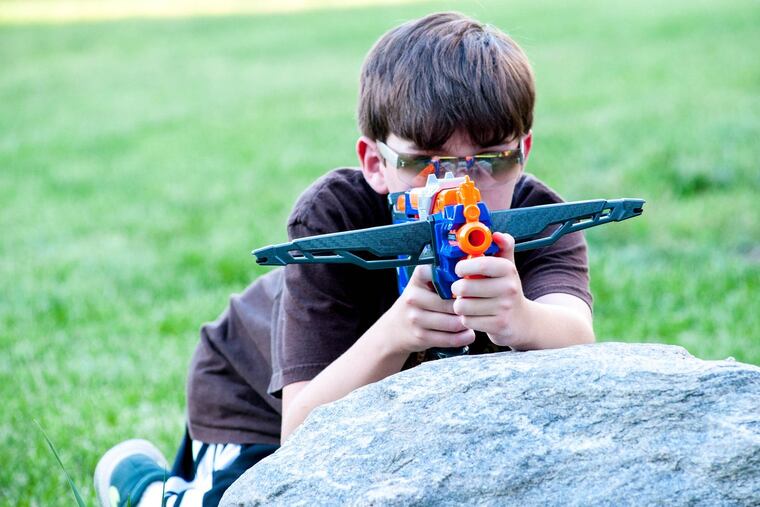Remember eye safety when playing with projectile toys
It's important for parents to be aware of proper eye safety when their children play with projectile toys. Eye injuries are commonly seen in clinics from these toys.

As the holiday season rapidly approaches, projectile toys such as a Nerf gun may be a requested present. These toys are a popular toy choice for all ages, especially children.
One rising concern among pediatric ophthalmologists and other medical professionals is eye safety in children surrounding these toys. A recent report, conducted by physicians at a British hospital, warns of potential eye danger from these toys. It is crucial for parents to be aware of proper eye safety, as projectile toy injuries in children are commonly treated in our clinic.
The bullets propelled from the projectile toys, also referred to as "blasters," can be purchased from branded and unbranded manufacturers. The hardness of the bullet varies depending on the manufacturer. Be sure to read all warning labels thoroughly and remind children to never aim this toy at another individual's eye. Don't be afraid to have a conversation with you child. It is recommended to read warning labels together and discuss proper use of the toy prior to children playing with the product.
In addition to never aiming this toy at another individual's eye, distance is another key safety factor. Be sure to look at the recommended distance among players from different manufacturers.
If parents allow use of these toys outside or in the house, it's advised for children to wear protective eyewear. It may be difficult to get younger children to agree to use of protective eyewear during this activity, but it will be the best form of protection. Older children should not be using projectile toys at the same time as younger children, as different ages can lead to different strength and judgement levels during play.
If a child is hit in the eye from a projectile toy, you should seek medical attention immediately. Common side effects include bleeding, blurred vision, and swelling. Patients with these injuries will be required to attend ongoing visual check-ups and will be monitored for at least a week after the injury occurs.
Additional monitoring is done to ensure there is no rebleeding in the eye, as there is a potential for glaucoma, elevated eye pressure, to develop. Children that suffer from this type of injury should also not participate in physical activity right away. Quiet play for at least a week after the injury occurs is best. Children will most likely be monitored by an ophthalmologist every three months for the first year after the injury to ensure no long-term injuries or side effects develop.
There is a risk for greater injury, including vision loss, depending on the severity of the injury and time frame of medical attention.
Toys and home playground equipment cause more than 11,000 injuries to young eyes every year. Ultimately, a potential for eye damage will remain, but parents and caregivers know their children best and are most equipped to make decisions on appropriate toys for his or her child.
For more information on eye protection and safety tips, visit the American Academy of Ophthalmology website.
Nicole DeLarato, MD, is an Attending Ophthalmologist, Section of Ophthalmology at St. Christopher's Hospital for Children.